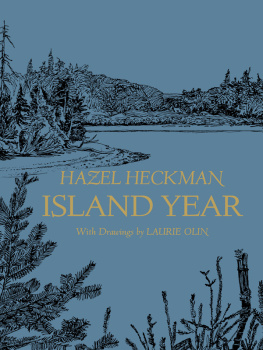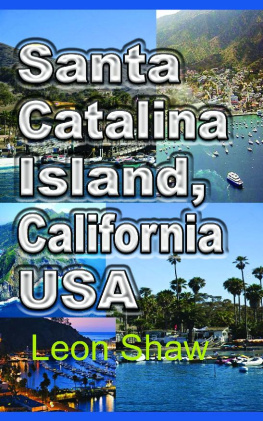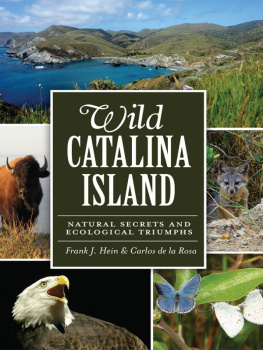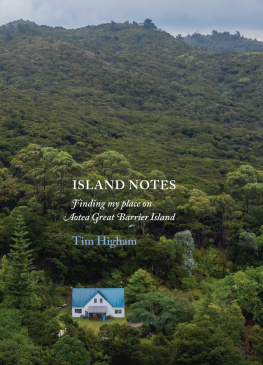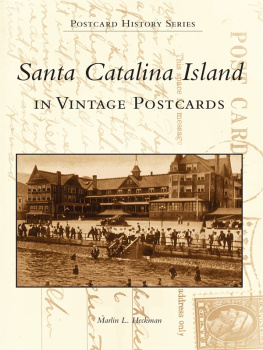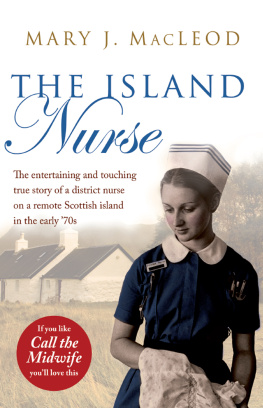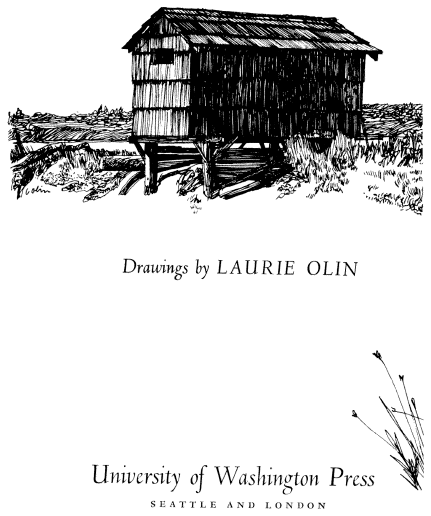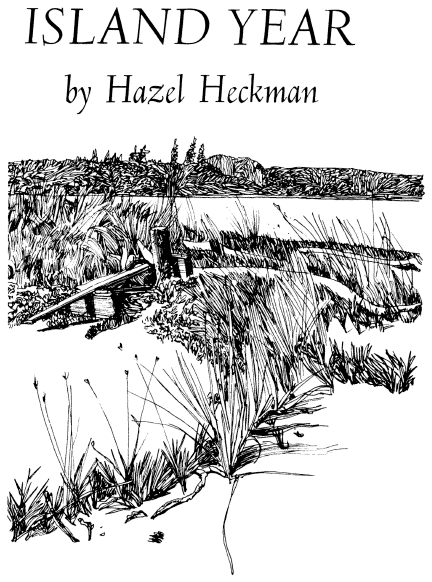PREFACE
I suppose it may seem presumptuous to launch yet another book about an area so small and so circumscribed as Anderson Island. On the other hand, the two previous Island books (Island Memoir by Betsey Johnson Cammon and my own Island in the Sound) dealt primarily with the human population, past and present. This one pertains principally to the ecological world of nature, without which the Island would be a barren waste, unfit for any habitation.
I think it was a dead bird that prompted or persuaded me to start an annual record of fauna and flora observed on Anderson Island. Because of mainland commitments, my husband and I were still week-enders here. (Now, as native Vermonters say of relative newcomers, we are permanent summer people.) During the five weekdays in winter immediately prior to our moving here as year-around residents, we occupied the upper floor of a split-level house in Tacoma, perched on a wooded hillside that sloped down to salt water. From the front deck of this apartment we could see the Island slip, and see the ferry Tahoma set out and return, and watch a portion of the crossings.
The bird was a western tanager, scarlet and yellow and black, with white wing bars. Confused in flight by the reflection in the picture window that gave us a scenic view of Puget Sound water filtered between fir, madroa, anddogwood trees, the tanager struck the glass head on. Sometimes such an accident only stuns. The victim lies as though dead for an hour or so, then regains his senses and takes flight. This one still lay on the deck the following morning, a silent rebuke, a bit of color lost to the world he had enriched and decorated. For as long as we lived in the split level the fatal collisions continued. I found dead juncos, house and purple finches, rusty and white-crowned sparrows, a cedar waxwing, a golden-crowned kinglet. Robins, seemingly more expendable because of numbers, most often met disaster.
Following the publication of Island in the Sound, which contained casual references to wildlife protection, I began to receive uneasy letters. An eastern woman wrote that she had walked in the woods following an aerial spray for Dutch elm disease and had seen no rabbits or squirrels and only a few birds, where all had been abundant. A westerner reported an unexplained dearth of jackrabbits. Letters came from here and there about polluted water, dead fish, the disappearance of coyotes and of golden eagles. One concerned reader, George Munford, of Grayling, Michigan, sent a year's membership to Defenders of Wildlife.
During the three-year period from January 1966 through December 1968 I kept a daily record of fauna and flora observed during walks on the Island. The entries for given dates each successive year show a remarkable similarity. Two years out of three I saw the first violet-green swallow on the same day. In the third book the event was recorded only forty-eight hours later. Dates varied little for the first wood lily seen, the first trillium. In an era of unrest I found a certain blind assurance in this dependable rhythm of natural succession. The junco came in October and took his leave in April. Even happenings had their appointed time. The ebb and flow of the tides upon which so many lives depended were as faithful as was the rising and settingof the sun, the phasing of the moon, the appearance of the planets and the constellations, the periodic meteor showers, the orbit and the turning of the earth on its axis.
I found, oddly enough considering the small space it occupies, that the Island could be sectioned into climatic and geographic zones for exploration. On any given day a variation in temperature of several degrees might occur between sections only a mile or two apart. In some areas jackpines crowded firs and cedars along the fringes of the woods; in others, trees commonly known as white oak grew in profusion. Service, ninebark, and mountain balm had their favorite niches.
With so much to be seen, so much to be brought home for identification as to species, I made slow progress. The Island came to seem much larger than was actually the case. Some areas I visited again and again, having seen in dormancy what I wanted to see in leaf, in bloom, in fruit. I tried to catch the first emergence of red-flower currant, oso-berry, and skunk cabbage, to follow the slow shading of wake robin from clear white to rich rose-purple before the petals dropped.
Woods in places were so deep and dense, so nearly impenetrable as to be invested with mystery. One could see no more than ten feet beyond the fence row that defined the roadway. Lost once in our own back acre, I circled for thirty minutes without any sense of direction. I explored woods where only an occasional ray of sunlight penetrated. From a thick carpet of conifer needles came saprophytes of ethereal beautycoral mushrooms, orange jelly cups, once an unexpected patch of golden chanterellesand miniature deer, sword, and lady ferns, a sudden spread of perfoliate miner's lettuce, a rare greenish orchid called rattlesnake plantain.
After two or three years of exploration (often trespassing, for which I publicly apologize), I felt that the Islandwas as comfortable, as familiar, as an old worn shoe. To find myself alone in a wood or on an empty road lent a feeling of undiluted serenity.
The listing of fauna and flora in this book makes no pretense of being exhaustive. Nor is the text meant to be any kind of field guide. I explore and identify solely to satisfy my own curiosity, and for pleasure. Many good books, of which I have made wide use, are available. Nor is this treatise meant to be a swan song for the Island as I have known it. Despite saw, ax, dynamite, earth-mover, and ambitious man, the larger portion of the land mass remains essentially unblemished.
Although the contents of this book are based primarily on my own observations of fauna and flora during some twenty years of wandering about the Island, and I am solely responsible for any errors in identification of species, I am indebted to a great number of authors and trained experts in the field of nature.
I would like especially to mention the late E. A. Kitchin. From his own familiarity with Anderson Island birds, Mr. Kitchin marked for me his Distributional Check-list of the Birds of the State of Washington. Other particularly helpful books are C. P. Lyons' Trees, Shrubs and Flowers to Know in Washington, Stanley Jewett et al., Birds of Washington State

